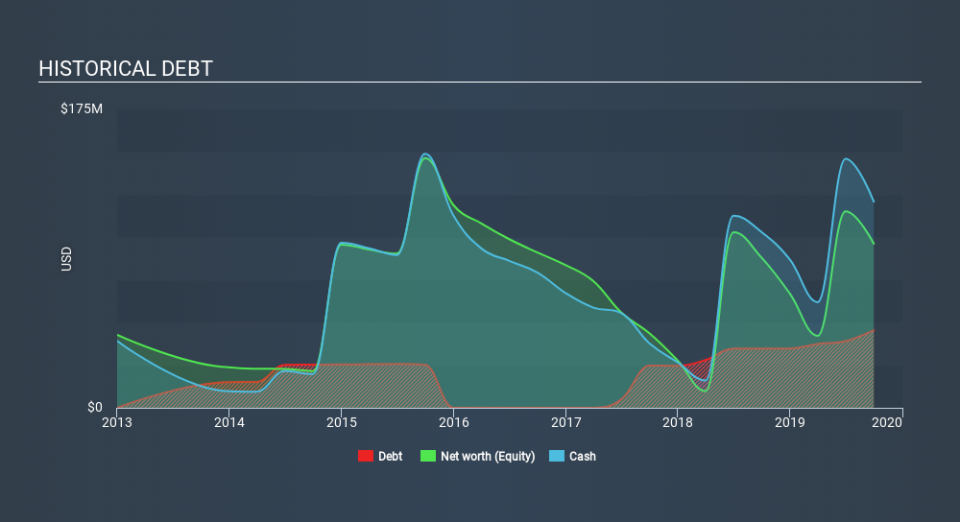Is Sientra (NASDAQ:SIEN) Using Debt In A Risky Way?

Warren Buffett famously said, 'Volatility is far from synonymous with risk.' It's only natural to consider a company's balance sheet when you examine how risky it is, since debt is often involved when a business collapses. We can see that Sientra, Inc. (NASDAQ:SIEN) does use debt in its business. But the real question is whether this debt is making the company risky.
When Is Debt A Problem?
Debt is a tool to help businesses grow, but if a business is incapable of paying off its lenders, then it exists at their mercy. Part and parcel of capitalism is the process of 'creative destruction' where failed businesses are mercilessly liquidated by their bankers. However, a more frequent (but still costly) occurrence is where a company must issue shares at bargain-basement prices, permanently diluting shareholders, just to shore up its balance sheet. Of course, debt can be an important tool in businesses, particularly capital heavy businesses. The first step when considering a company's debt levels is to consider its cash and debt together.
Check out our latest analysis for Sientra
How Much Debt Does Sientra Carry?
As you can see below, at the end of September 2019, Sientra had US$45.5m of debt, up from US$34.7m a year ago. Click the image for more detail. But it also has US$120.9m in cash to offset that, meaning it has US$75.4m net cash.
How Healthy Is Sientra's Balance Sheet?
The latest balance sheet data shows that Sientra had liabilities of US$64.1m due within a year, and liabilities of US$59.5m falling due after that. On the other hand, it had cash of US$120.9m and US$24.8m worth of receivables due within a year. So it actually has US$22.1m more liquid assets than total liabilities.
This short term liquidity is a sign that Sientra could probably pay off its debt with ease, as its balance sheet is far from stretched. Simply put, the fact that Sientra has more cash than debt is arguably a good indication that it can manage its debt safely. There's no doubt that we learn most about debt from the balance sheet. But ultimately the future profitability of the business will decide if Sientra can strengthen its balance sheet over time. So if you're focused on the future you can check out this free report showing analyst profit forecasts.
In the last year Sientra wasn't profitable at an EBIT level, but managed to grow its revenue by32%, to US$80m. Shareholders probably have their fingers crossed that it can grow its way to profits.
So How Risky Is Sientra?
By their very nature companies that are losing money are more risky than those with a long history of profitability. And the fact is that over the last twelve months Sientra lost money at the earnings before interest and tax (EBIT) line. Indeed, in that time it burnt through US$92m of cash and made a loss of US$111m. But at least it has US$75.4m on the balance sheet to spend on growth, near-term. With very solid revenue growth in the last year, Sientra may be on a path to profitability. Pre-profit companies are often risky, but they can also offer great rewards. When I consider a company to be a bit risky, I think it is responsible to check out whether insiders have been reporting any share sales. Luckily, you can click here ito see our graphic depicting Sientra insider transactions.
At the end of the day, it's often better to focus on companies that are free from net debt. You can access our special list of such companies (all with a track record of profit growth). It's free.
If you spot an error that warrants correction, please contact the editor at editorial-team@simplywallst.com. This article by Simply Wall St is general in nature. It does not constitute a recommendation to buy or sell any stock, and does not take account of your objectives, or your financial situation. Simply Wall St has no position in the stocks mentioned.
We aim to bring you long-term focused research analysis driven by fundamental data. Note that our analysis may not factor in the latest price-sensitive company announcements or qualitative material. Thank you for reading.

